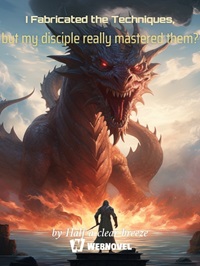Chapter 176: Driving Fish to the Abyss
"Those bastards! Scum! What are they all doing?" The Duke of Norfolk angrily threw the report on the battle to the ground and then kicked it, displaying a lack of composure.
"My Lord Governor, even though our forces have suffered some losses... they don't seem to be significant... My Lord Governor," his adjutant, Algin, stuttered nervously.
"It's not about the losses; this is a long-term struggle, and it's expected that we'll face such losses. Not to mention, these casualties are well within our expectations. Tony, do you think I'd get so angry over the deaths of just over forty men?" the Duke questioned.
"But, my Lord..."
The Duke of Norfolk had calmed down at this point and continued, "The real issue is the commander of this unit. After enduring such losses, he decided to vent his frustration by massacring the villagers left behind in a place called..."
"Blackstone Village," Algin interjected.
"Yes, Blackstone Village. That fool actually, in his fit of rage, killed all the villagers left in Blackstone and claimed it was a warning to the insurgents. Doesn't he realize that at this point, the villagers who chose to remain when he arrived hours later were at least not directly opposing our rule? What is he doing? Is he trying to drive all the Irish people to the insurgent's side? Whose side is he working for, us or those insurgents?" The Duke of Norfolk was infuriated again.
"Tony, I came to Ireland, and we had things in such good shape here. But this idiot, this scoundrel, has undone all our efforts..." The Duke sighed and leaned back in his chair, removing his glasses from his nose and tossing them onto the table. He closed his eyes for a moment and then waved his hand. "Tony, find out who this idiot is, and then have him retired. Otherwise, who knows what other foolish things he might do!"
Algin picked up the report and examined it. With a troubled expression, he spoke, "My Lord Governor, that captain's name is..."
"What is it?" The Duke of Norfolk opened his eyes.
"The commanding officer, his name is Captain Taverton, and if I'm not mistaken, he is Count Taverton's son," Algin replied.
Taverton rode at the head of the column with a few other cavalrymen, while the infantry lagged a bit behind. As a result, fewer soldiers were within the coverage area of the mines. Therefore, the guerrillas hiding behind the ridge spared him.
Gradually, the infantry entered the mine's coverage area. The person watching through binoculars raised their hand and made a gentle downward gesture. Next to them, another guerrilla began to crank a small hand generator forcefully. Shortly afterward, a distant explosion signaled the detonation of the directional mines.
Napoleon's version of the directional mine had a similar structure to later designs. It had an arched iron plate on the back, filled with uniform nitrocellulose explosive. Since nitrocellulose's explosive power was unstable, this version used significantly more explosive than its modern counterparts. In front of the explosive was a payload of eight hundred iron balls, enclosed by a thin wooden shell.
Following the explosion, the eight hundred iron balls swept through the British marching formation like a giant broom.
Taverton was startled by the explosion and immediately dismounted, taking cover behind his horse. He cautiously peered around, but he couldn't see anything. Turning to look back at his troops, he was stunned.
The ground was littered with the bodies of British soldiers, many of them nearly unrecognizable. More were lying on the ground, emitting strange, inhuman sounds of agony.
The devastating impact of the explosion soon became apparent. All the surrounding villages saw an influx of fleeing residents, and with the help of these escapees, the guerrillas obtained more information. They intensified their attacks on the villages controlled by the black dogs. With their assistance, over a thousand Irish farmers fled from County Kilkenny to the non-security zone controlled by the guerrillas in just a month.
In response to the current situation, the Duke of Norfolk devised two plans:
First, he recommended expanding the navy's fleet of clipper ships for intercepting French smugglers.
Second, he gathered resources and prepared for a second round of extensive operations in the guerrilla-controlled zones.
Third, he initiated a phased training program for British officers to help them understand the United Kingdom's interests and policies, ensuring they didn't hinder the United Kingdom's efforts.







